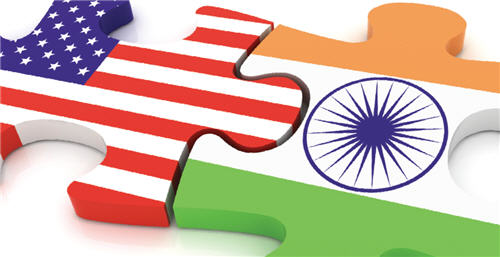
President Obama will be making his first visit to India next week. There is no question that the President’s trip is important as a symbol of the growing prominence of India’s role in the global economy, and its strategic importance in regional stability. The upcoming meetings, especially when juxtaposed with the recent U.S.-Pakistan Strategic Dialogue and the continuing tensions involving US presence in Afghanistan, are an opportunity for the Americans to engage with an established democracy (the world’s largest) and focus on building a mutually beneficial economic partnership, and less so on counterinsurgencies, drone attacks, and nation-building. In addition, the visit will address key issues for both sides, including US H1B visa fees for Indians immigrants, U.S. export controls, and India’s nuclear liability legislation which is currently presenting a roadblock to the historic civil nuclear deal between the two countries. It is also no small coincidence that the President will be starting his trip in Mumbai, and staying at the majestic Taj Mahal hotel, one of the sites of the horrific attacks of November 26, 2008, a gesture, undoubtedly to show solidarity with the Indians in standing up again terrorism.
However, for those of us who see India through a multidimensional lens and have lived and worked well outside the U.S. Embassy compound in Chanakyapuri, it seems that the “groupthink” by Washington and New Delhi has created a narrow parameter for this trip, namely creating stronger ties between business and government elites, and not recognizing the other less “shining” India. As a result, opportunities may be missed that address important, far-reaching issues, such as how the US and India can work together in addressing the poverty in which nearly 40% of India’s 1.35 billion people still live and access to quality primary and secondary education (a challenge shared by both the Americans and Indians). And, building linkages and support for innovative entrepreneurs and small medium enterprises in the US and India who are key drivers of both economies (and who will certainly not be able to afford the thousand dollar per person lunches being organized around the visit). Currently hundreds of millions of India’s people are marginalized – their participation in the marketplace is vital to India’s continued growth, and the growth of the global economy, creating the capacity and infrastructure to meet its own demands as well as those of U.S. and international investors, and most importantly, in ensuring regional stability.
Last week, Secretary of State Hillary Clinton, announced a $2b military aid package to Pakistan. President Obama’s visit to India can complement this reaffirmed US commitment to Pakistan by encouraging India to continue pursuing dialogue with its neighbor, while maintaining its commitment and partnership with India on counterterrorism issues. The U.S. will never be a direct interlocutor between India and Pakistan. However, its strategic but separate alliances with both countries can be instrumental in moving the relationship forward, and clearing the lines of communication about their activities in Afghanistan.
President Obama’s visit to India will likely meet expectations of showing mutual respect between the two governments, strengthening economic alliances, and giving India its earned recognition as an emerging global superpower. (A recognition that will be further solidified if and when the US endorses India’s bid for a permanent seat on the U.N. Security Council.) However, it will be important for both New Delhi and Washington to move beyond the elite business paradigm and think creatively on how the two countries can work together towards building sustainable and equitable growth for both their constituencies, and towards regional and global security.
Shikha Bhatnagar is associate director of the Atlantic Council’s South Asia Center. This article is part of the Atlantic Council web forum "Obama’s First Tour of India."
Image: usa-india-puzzle.jpg
